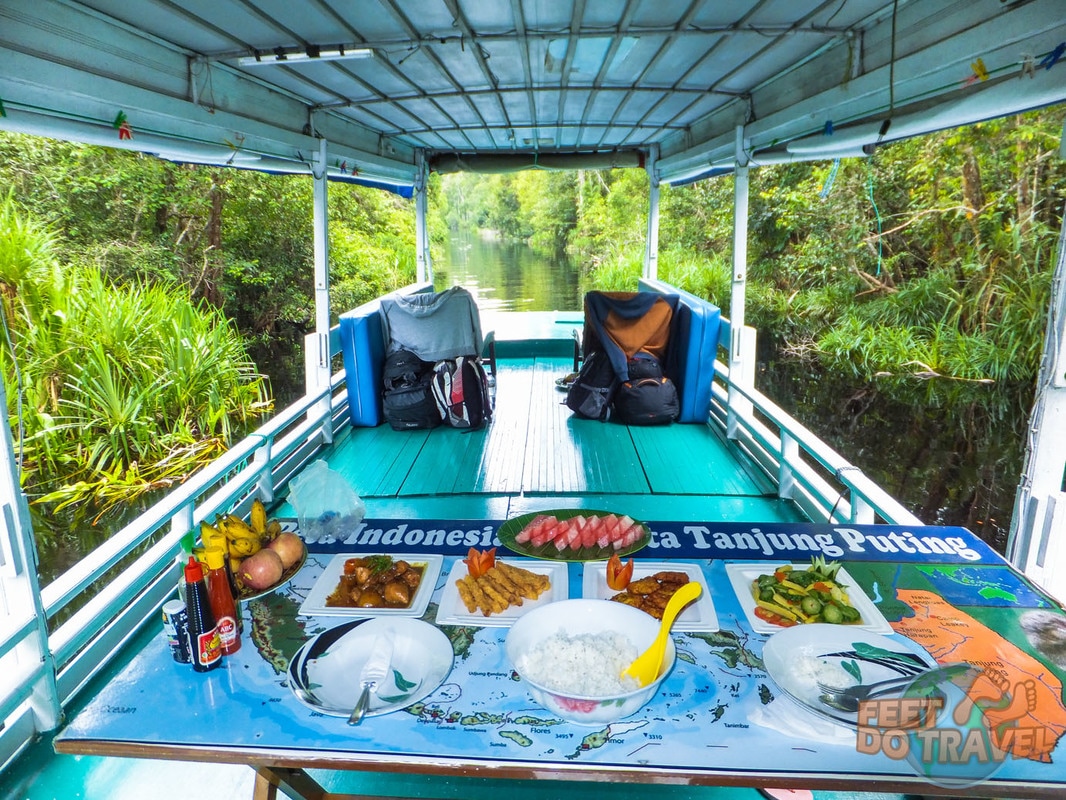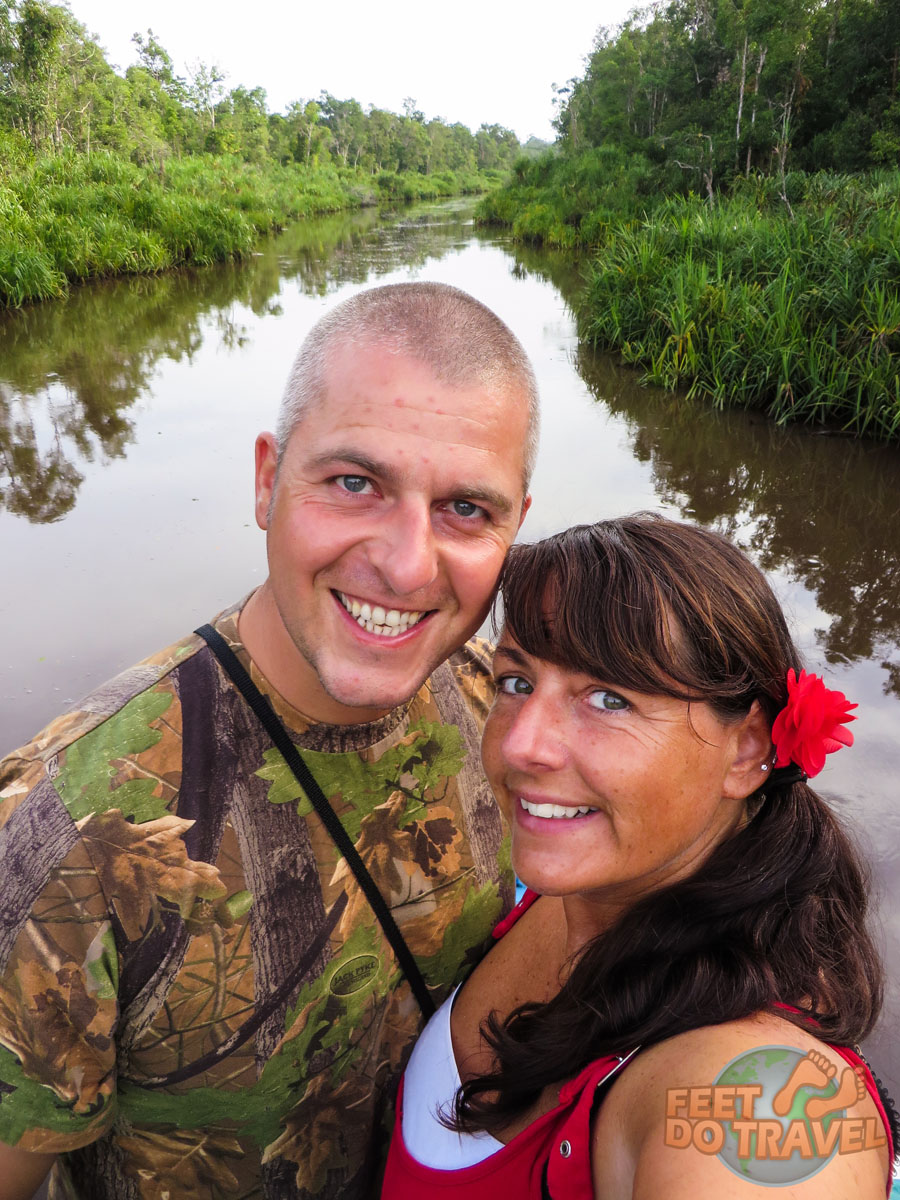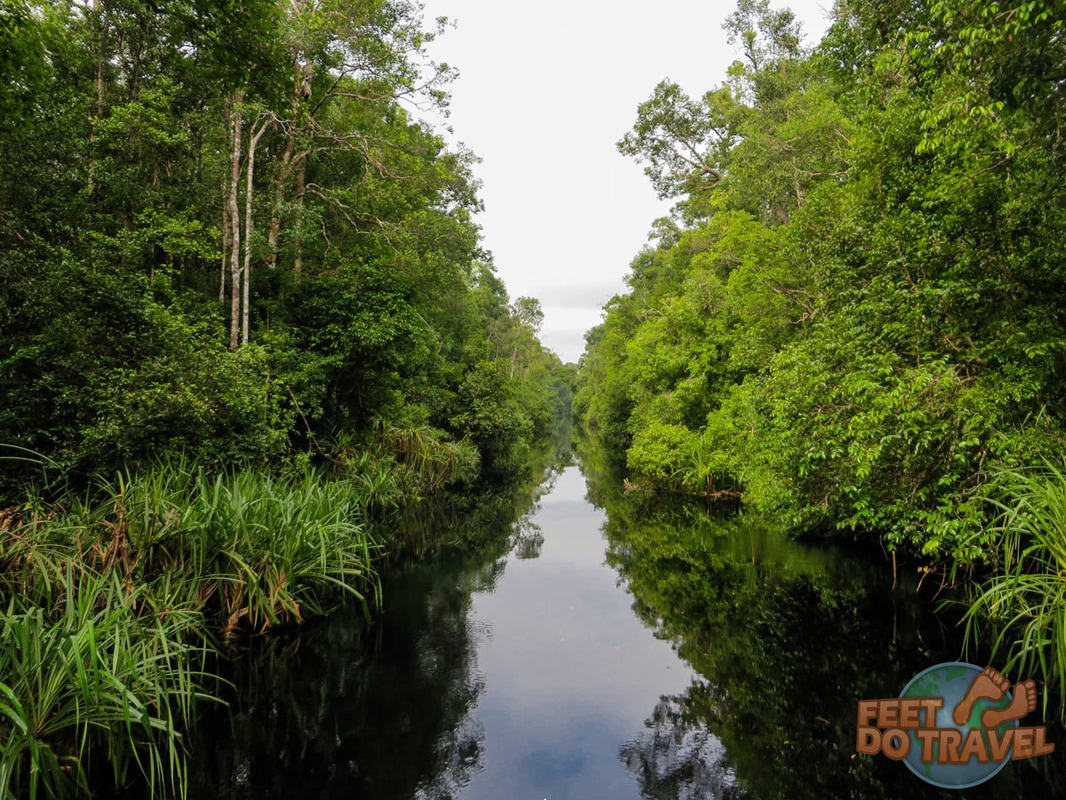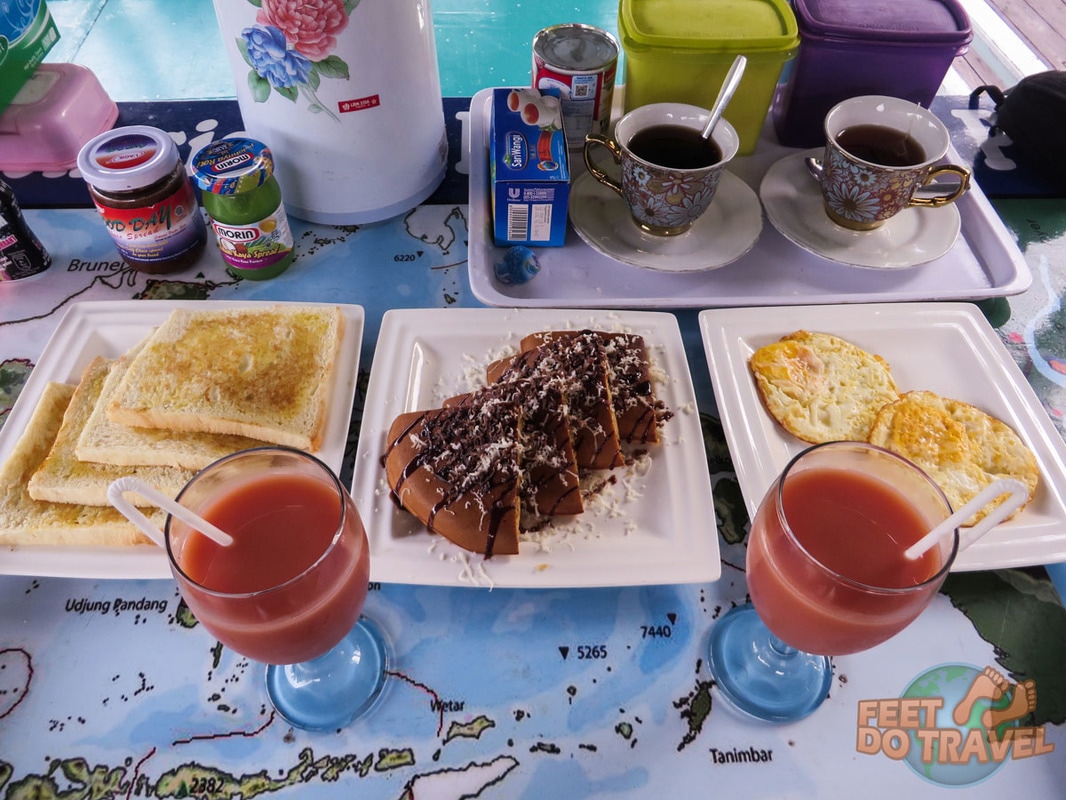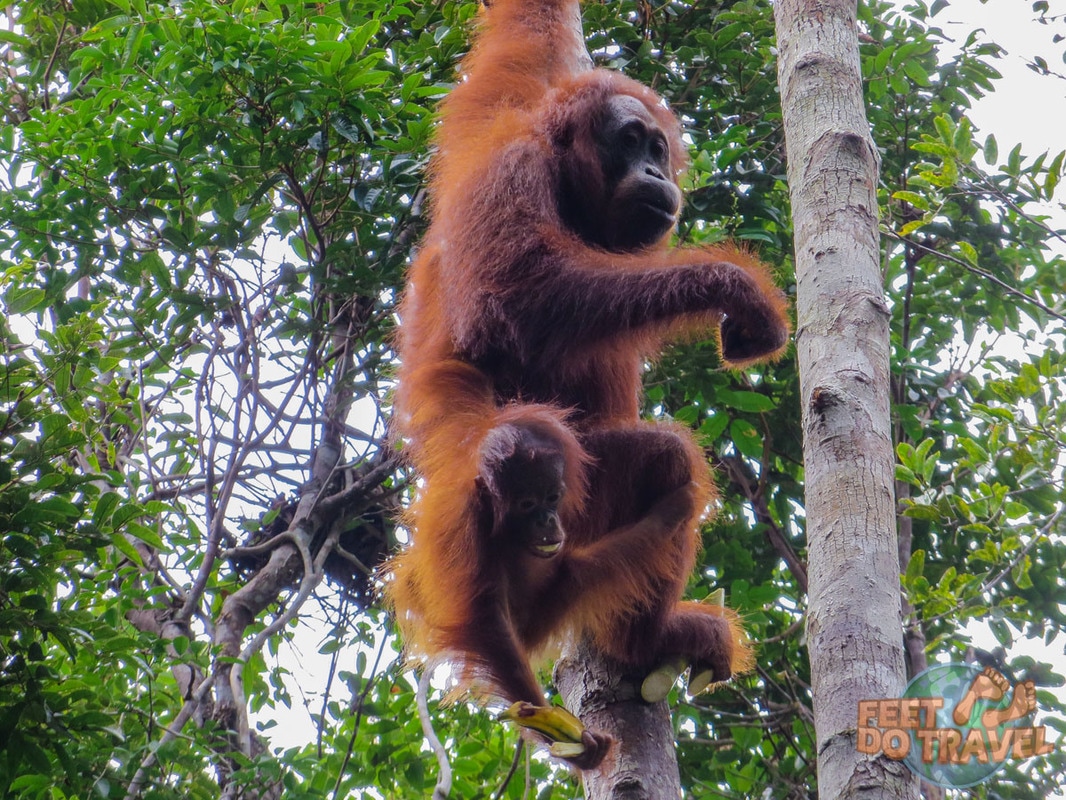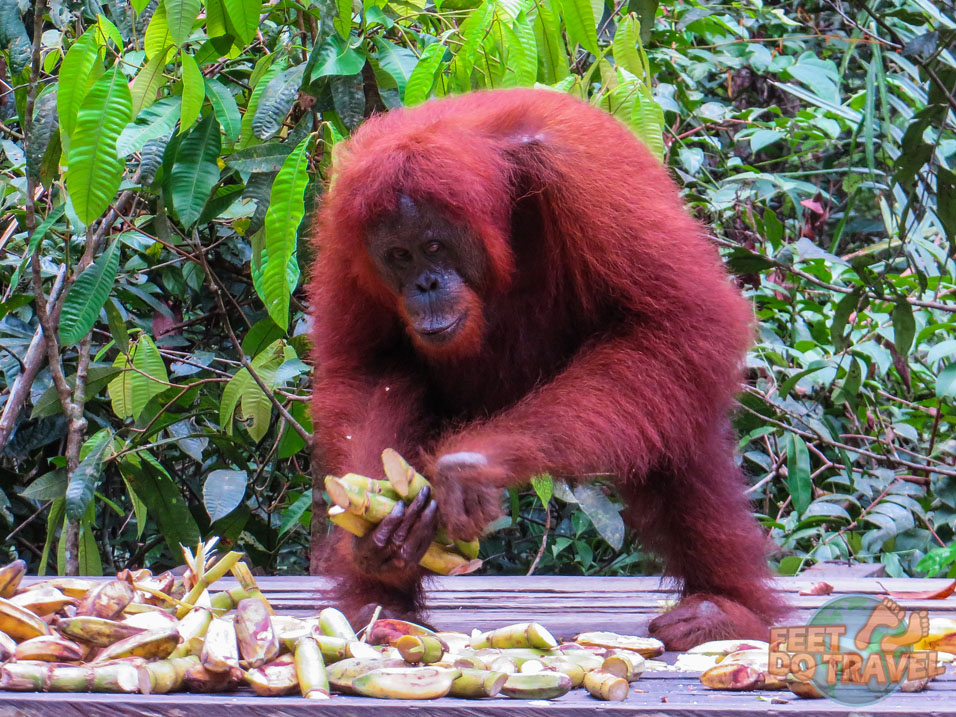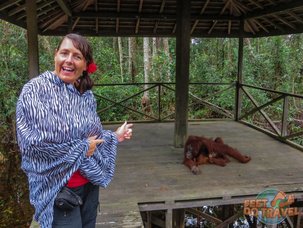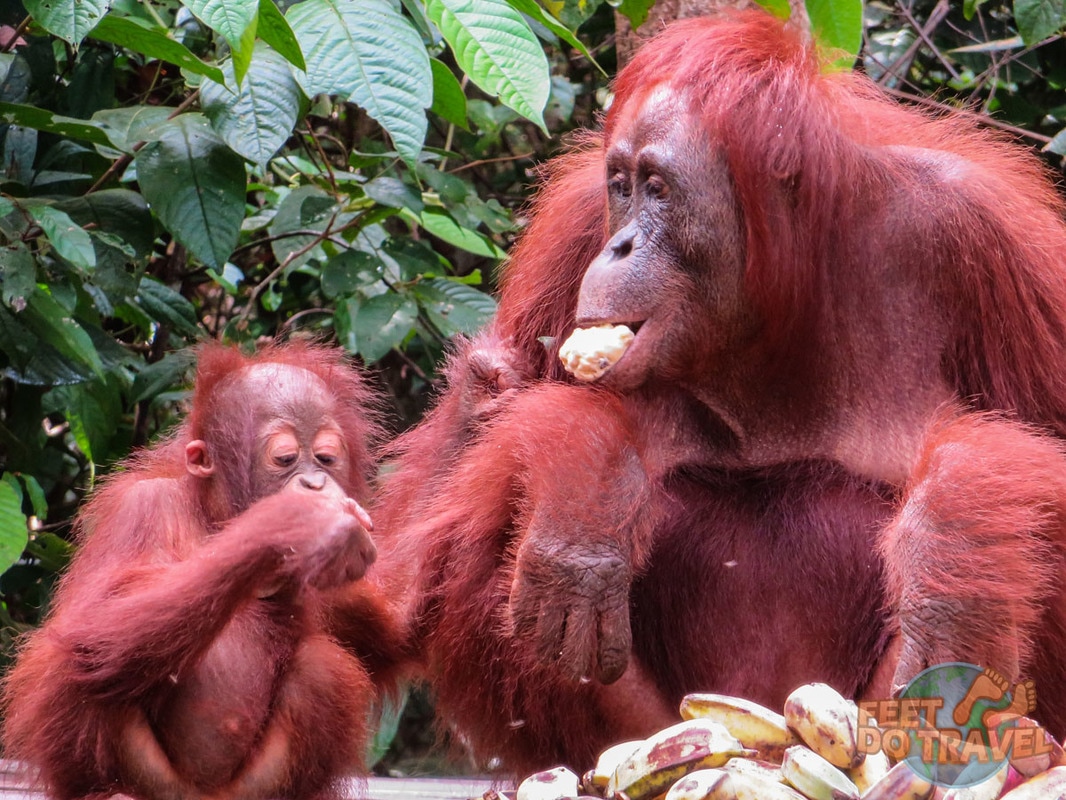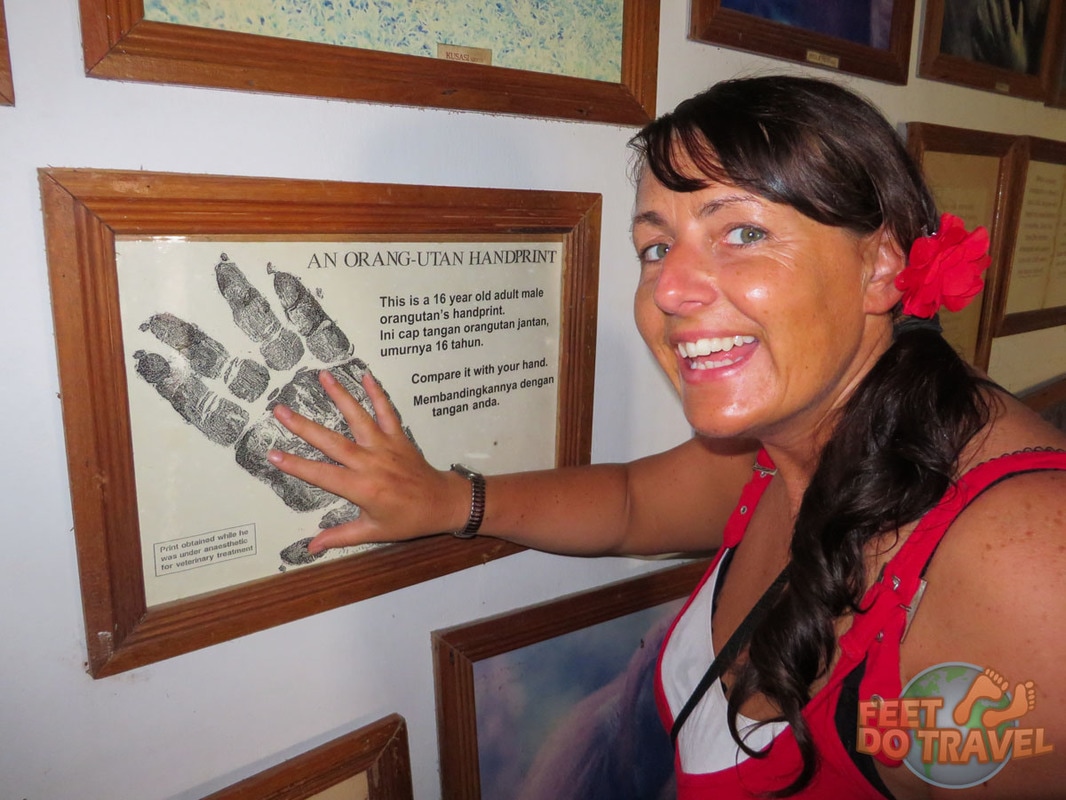Today, there were no Monday blues, no disappointing thoughts that it was the beginning of the week; they had been replaced by an amazing experience that we would always remember. This is our Indonesian Orangutan Adventure.
How did you spend your Monday morning?
As soon as I heard you can hire a boat to cruise down a river looking for wild and semi-wild orangutans, I knew this was something I had to do! This particular adventure is in Tanjung Putting National Park, a short 1 hour 10 minute flight from Jakarta, and we pre-booked a 3D/2N tour with the amazing Kingfisher. We wanted for nothing on this trip, and during the entire time we were made to feel like royalty.
Tours can be arranged around your flight arrival time either in the morning, afternoon or like ours, in the evening.
We boarded our own personal Klotok, an traditional Indonesian boat, just before the sun set which we watched in comfort.
Orangutan Feeding Stations
Pondok Tanggui (daily feeding at 9am)
During the course of our trip we had four opportunities for orangutan encounters, orangutan translated means "old man of the forest". These feeding stations are set up part-way into the jungle, and there are around 6,000 orangutans who live here. Around 5,000 are wild and the remaining 1,000 are rehabilitated, it is these orangutans that supplement their diet from the feeding stations.
After our filling breakfast which included tea and coffee served in china teacups with saucers, we took a short 15 minute walk into the jungle. We passed interesting plants like pitcher plants (a prey-trapping plant which has a deep cavity filled with digestive fluid liquid).
In total during the 1.5 hours, we saw about six different orangutans, including the mother and baby from earlier who had made their way over to the feeding station. The mother would keep her baby close to her, almost shielding it away from prying eyes but every now and then he would poke out his little face to a chorus of click-clicks from visitors’ cameras.
Camp Leakey (daily feeding at 2pm)
The most famous of camps in the area is Camp Leakey named after the late famous naturalist Dr Louis Leakey who helped and encouraged Dr Birute Galdikas to pursue her dream of studying wild orangutans. Birute Galdikas is to orangutans what Diane Fossey is to the Mountain Gorilla and Jane Goodall is to chimpanzees; Dr Leakey trained all three of these phenomenal women. Galdikas and her team have dedicated their lives working tirelessly to conserve and protect orangutans since 1971. Camp Leakey is the site of the longest continuous study of any of animal in the history of science.
At this station we had three sets of mothers with their young of three different ages, newborn, baby and an infant who was still learning to climb but would always keep one hand on his mother for reassurance.
Now, we have seen enough David Attenborough documentaries to know that alpha males acting in this way doesn’t always end well for mother and baby, so all sorts of thoughts entered our heads. Gundul’s strength and power were clearly visible – it was daunting, especially as he appeared to be heading towards us! As it turned out, Gundul fancied a bit of hanky-panky with one of his women! It didn’t matter that this one was holding a baby (his baby as well!) but thankfully it all quietened down quite quickly.
After a few minutes, when Gundul’s back was turned, the mother made a quiet and swift escape with no harm to her or her little one (and no hanky-panky).
What a magnificent experience to hear and witness! Never in my wildest dreams could I have hoped for this orangutan alpha male behaviour.
The Sekonyer River is an unattractive brown colour caused by coal mining. The miners strip away the trees which removes the root systems holding all the soil in place. When it rains, all the loose soil is washed into the river making it a reddish brown colour.
The River Leakey is black which is the true natural colour of these rivers, and how it should be due to the rich pete (rotting organic material) in the soil. At one point where the two rivers meet, a line is clearly visible separating the two.
We were blessed to have the time and opportunity to view the orangutans on four different occasions. This meant we had plenty of time to simply sit down, observe their behaviour and social interaction, as opposed to just snapping away in excitement with our cameras as we have done in the past (including on this trip!). Over the course of the two days, I would say in total we spent around 4.5 – 5 hours with these gentle creatures, and it was wonderful to be near them and “orangutan watch” (like people watching, but with apes instead of humans!)
On one occasion, as we were nearing one of the feeding platforms, we heard the cry from a young orangutan in a tree directly above us. His mother had taken her little baby to the platform and left him behind so he was crying out for her in distress. His pitiful wails were heartbreaking, but thankfully he later made his way to the platform to be reunited with his siblings.
Bananas are not worth fighting over!
Orangutan Facts
- Never use a flash to photograph the orangutans – Ahmed from Camp Leakey is blind in one eye caused by the flash from tourists’ cameras over a period of years.
- The name “orangutan” derives from the Indonesian/Malay words “orang” which is person and “hutan” meaning forest. So orangutan literally “person of the forest”, but are often referred to as "old man of the forest".
- Alpha males generally dominate an area of around 8km.
- Males can grow up to 5ft high and weigh around 120kg. Females can grow up to 4ft high and weigh up to 45kg
- The females will rear their young until 7 years old, the longest in the animal kingdom.
- A female can begin to reproduce at 15 years old and can continue until she is around 35.
- On average in the wild, orangutans can live beyond 50 years of age.
- The strength of a male orangutan is at least 8 times great than that of a man, a female’s strength is approximately 4 times greater.
- On the feeding platforms, the orangutans are given sugar cane, bananas, sometimes pumpkins, sweet potato and oranges, basically a mixture of anything sweet!
- Orangutans sleep in nests high up in the trees and they make a new one every day. This is because they can spend a lot of time in these nests which includes going to the toilet and they obviously want a clean place to sleep.
How to get to Tanjung Puting National Park
From Jakarta it’s a 1 hour 10 minute flight to Pangkalan Bun which is the nearest airport to Kumai, the port to take you into Tanjung Puting National Park. Kalstar and Lion Air offer reasonably priced flights (ours were £80 return per person) which you can purchase either directly, or through a comparison website such as Traveloka.
If you are not in Jakarta and are in another part of Borneo, Jakarta is still the main airport and the majority of flights will be via there.
When to visit
Orangutans can be viewed all year round but the numbers you will see at the feeding stations depends on whether or not there is a lot more fruit on the trees. It is obviously better for the orangutans if there is more natural feeding, however if there is more natural food for them to feed on, not so many will visit the feeding stations. In saying that, we went in low season and saw on average of at least five at each station.
High season is July – September and there can be as many as 20 klotok’s (meaning more people) at each feeding station.
Low season – the trees have more fruit which means the orangutans feed naturally in the wild and less visit the feeding stations. What this does mean is less people and prices are cheaper – make sure you negotiate the price!
Klotok hire
You have a choice of hiring a Klotok and crew separately yourself but in truth, it does appear rather long winded and complicated. Alternatively you can use a tour operator which, in my opinion, is far less hassle and very reasonably priced when you consider what is included. We booked with Borneo Wisata (who was the first Klotok in the National Park) and cannot rate them enough – booking was so incredibly easy and we had zero stress (email Harry [email protected] or Tel: +62 (0) 81 2500 0508). We simply told him what day and time our flight would be arriving and he took it from there. For around 6,500,000 IDR (low season) you will have an All Inclusive package and you do not have to worry about a thing!
All inclusive includes an attentive crew, excellent food, all entrance fees, camera fee, all snacks and refreshments and in fact, you are treated like a King/Queen! Included is an extremely knowledgeable guide (Darmin was amazing!), Seriously, I cannot rate Harry and his team highly enough!
Travel facts
- The official currency is Indonesian Rupiah’s (IDR). £1 = 18,000 IDR.
- The official language is Bahasa Indonesia which is similar to Bahasa Malaysia (Borneo) and throughout Indonesia in general.
- There are no ATM’s or credit card facilities en route so take some cash with you in case you want to buy anything at the local village. ATM’s are in Pangkalan Bun and Kumai.
- When you are in the jungle, there will be no phone signal, no wi-fi or internet.
- Take mosquito repellent with you and use it, not just at night but when you walk into the jungle.
- A free 30 day visa is given at the time of arrival (not for all countries). A 60 day visa can be obtained in advance from consulates and embassies. You can also buy a Visa on Arrival for US $35 at the airport in Bali, Lombok & Jakarta, this will need to be extended for a further 30 days at Immigration before the 30 day expiry.
- If you can speak just a couple of Indonesian words, you will receive a big smile in return, even if you simply use “Pagi” (morning) and “Terima Kasih” (thank you) it will be hugely appreciated.
Have you viewed orangutans in the jungle? If so, share your experience with us in the comments section below!

Book your Indonesia holiday, or weekend break hotel through our website. We always use Booking.com, and are proud to have a partnership with them. Click on the icon and search as normal.
Tarsiers and a Monkey Selfie
Komodo Dragon Hike in Rinca
Komodo, Flores, More Than Just Dragons
Lembongan - Bali, but Better!
Searching for Street Art in Canggu, Bali
Gili Air - The Perfect Island?
Gili Trawangan - Not Just A Party Island
Gili Meno - The Island of Love
Best Sunset Spots on Gili Air
10 Must Try Indonesian Dishes
Gili Gede - The Secret Gili Islands
Gili Asahan - The Secret Gili Islands
Gili Sudak and Gili Kedis - The Secret Gili Islands
Kuta Lombok - The New Kuta Bali?
Is Pink Beach Lombok Worth Visiting?
Wonderful Waterfalls of Lombok
Jewels of Java - Borobudur & Prambanan
Derawan & Sangalaki - Borneo's Hidden Gem?
Raja Ampat on a Budget
Are you a Scuba Diver? Check out these related links:
Scuba Diving the Gili Islands
Manta Madness
Diving Raja Ampat
Lembeh - A Magical Muck Diving Experience
USS Liberty in Bali - Highly Wreck-Ommended
The #FeetDoTravel blog link-up!
We are proud to host the #FeetDoTravel blog Linkup. If you have a blog post you would like to share, feel free to click on the picture below which will take you through to our Facebook Community and drop your link there. The link-up is open from Friday 12.00am (midnight UK time) and will close Sunday 12.00pm (midnight UK time). We are a fun and loyal group who are more than happy to comment, share and reciprocate! Happy Travelling Feet Fans!





